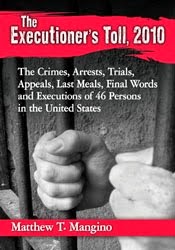As the societal costs of crime have fallen, criminal justice has diminished as a public concern. The most recent Gallup poll asking people about the leading issues facing the country found that fewer than 2% of respondents cited crime, wrote Eli Lehrer in National Affairs.
In the 1990s, as many as half did. Even if one includes Gallup responses to a variety of tangential issues — school shootings, guns, and the like — fewer than 10% of Americans consider crime to be a top agenda item. While crime-reduction policies played a significant role in every presidential election from 1960 to 1996, in the 2012 presidential contest, Barack Obama and Mitt Romney never so much as mentioned crime in any one of their debates or in their nomination-acceptance speeches.
Without question, this indifference stems from the fact that crime rates today are much lower than they have been historically. The Uniform Crime Reports issued by the Federal Bureau of Investigations show a nearly consistent drop in overall crime from the 1990s until today.
The telephone polls conducted by the Bureau of Justice Statistics to survey crime victimization show an even longer-running decline, dating all the way back to the 1970s. Although differences in legal standards and definitions make exact comparisons difficult, gross crime rates in the United States (a measure dominated by assaults and property crimes) are lower than they are in other sizable Western countries. Relative to Londoners, for example, New Yorkers are half as likely to have their cars stolen or to face serious assaults.
To read more: http://www.nationalaffairs.com/publications/detail/responsible-prison-reform
In 1997, William Richards was convicted of murdering his wife -- two previous trials resulted in hung juries. Dr. Norman Sperber a top forensic dentist certified by the American Board of Forensic Odontology, testified during trial that a suspected bite mark on the victim’s body was consistent with a rare abnormality in Richards' teeth.
During an evidentiary hearing in 2009, Sperber recanted his testimony and said he had been wrong. The court reversed Richards' conviction, finding that the evidence “points unerringly to innocence." Prosecutors appealed, and the California Court of Appeals ordered Richards to remain in prison pending the outcome.
Richards’ appeal is still pending and appears to mark yet another setback for Forensic Odontology. Some “experts” in the field now argue that bite marks are best used to exclude suspects, not identify them.
Visit Ipso Facto







